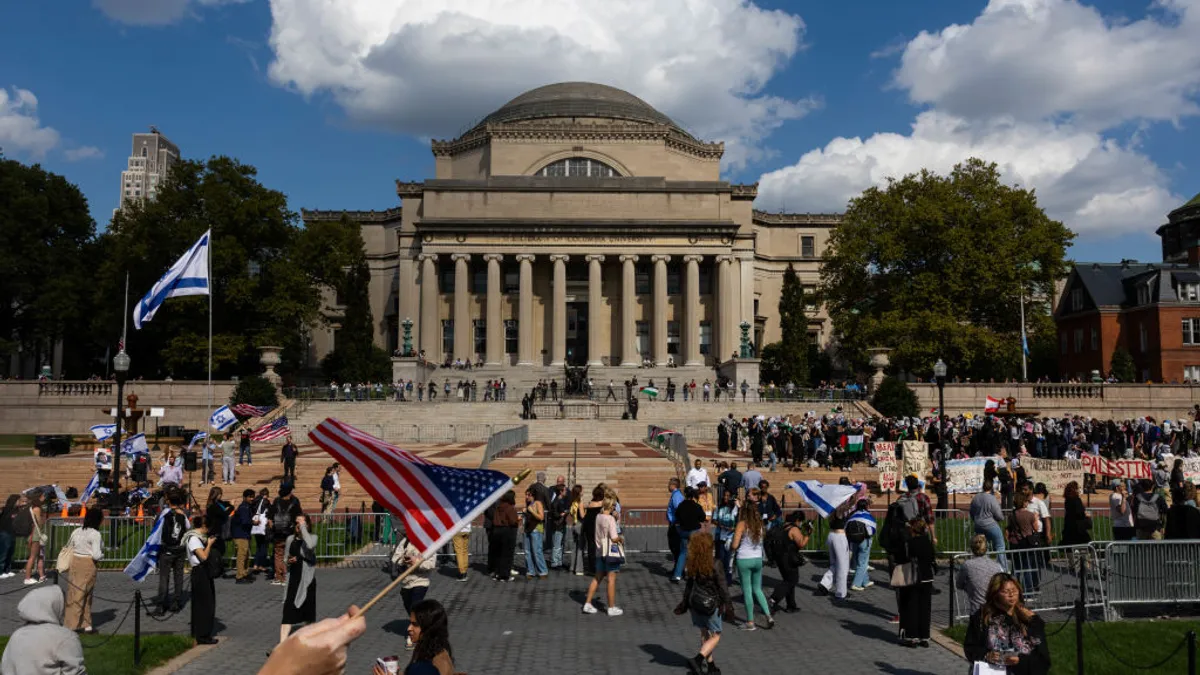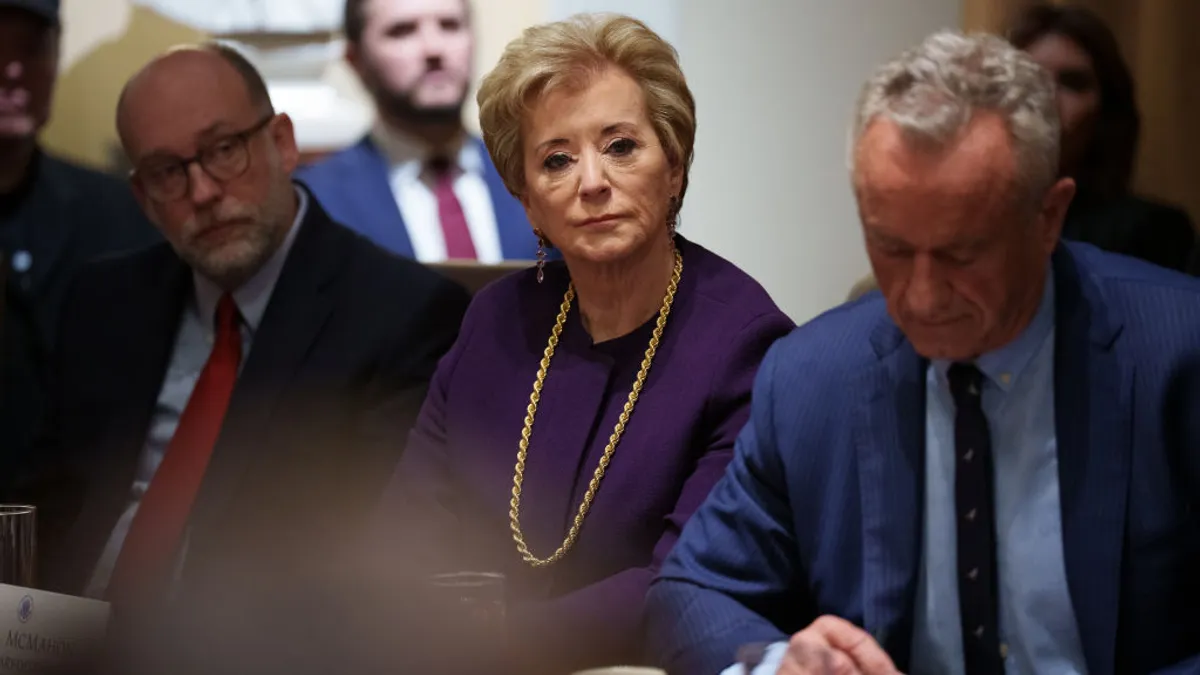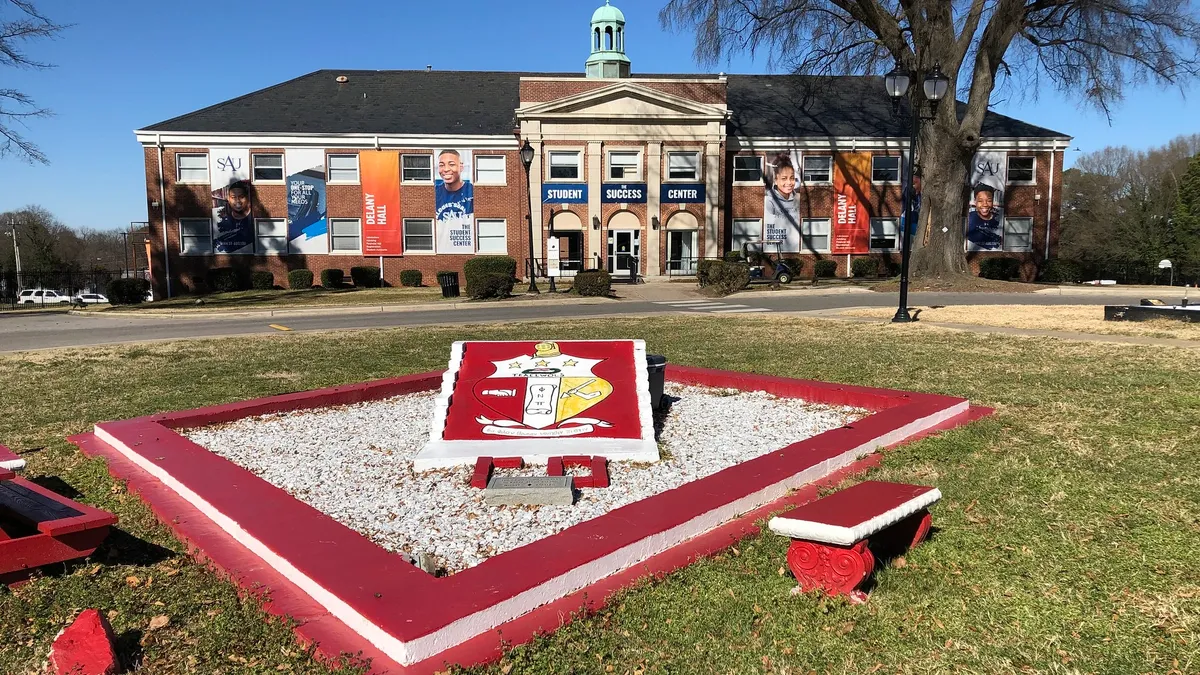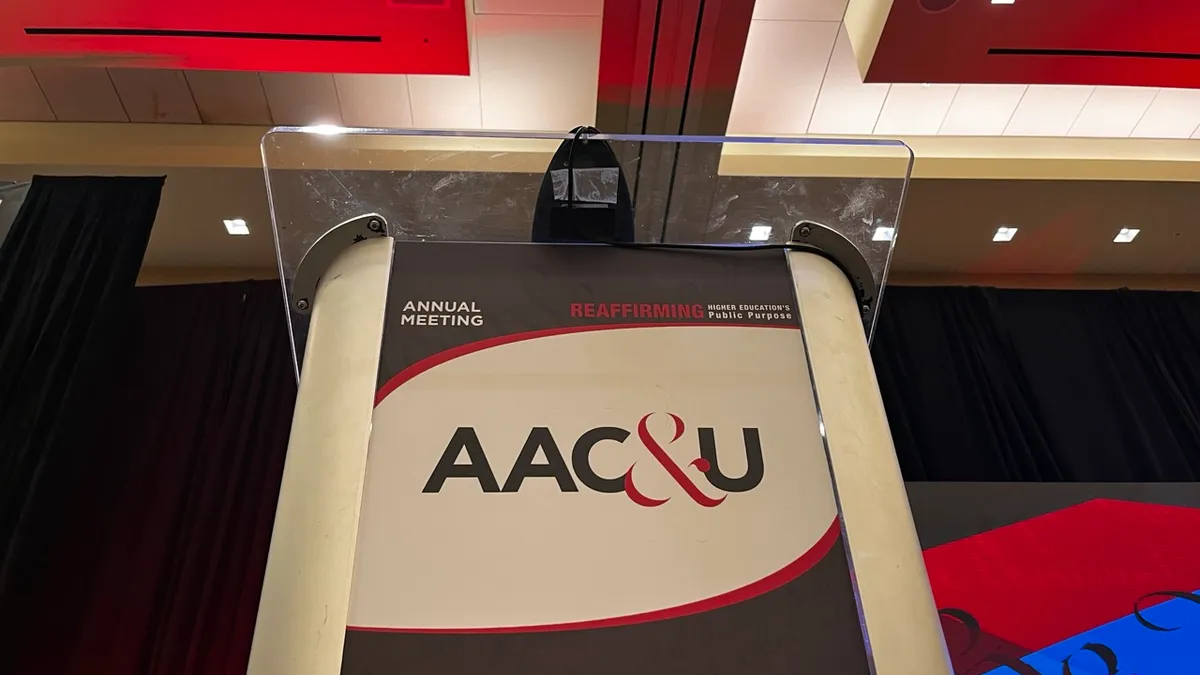Stephen Easton, president of Dickinson State University, wants you to know that the North Dakota public college is not in financial crisis.
On its face, that makes his decision to pursue a massive rework of the university’s academic operations, announced Wednesday, appear a little strange, he said in an interview.
Easton maintains, though, that distilling the university’s nine academic departments into four schools, and cutting a yet-to-be-determined number of tenured faculty members, is necessary to get ahead of the roughly $1 million budget shortfall he’s forecasting due to inflation.
In other words, the university hasn’t yet reached a financial tipping point, but Easton doesn’t want it to get there. However, the way Easton delivered the news, and the tight timeline he’s set for making these decisions, have chaffed faculty members.
The restructuring announcement came in a lengthy email Wednesday to faculty. It detailed which programs the administration may chop and demanded the university’s faculty senate, in roughly a month, make recommendations for which positions to slash. The email said that on or about Sept. 27, officials would inform faculty if they were being terminated.
Colleges regularly downsize. And it’s not so unusual to consolidate on the scale that Easton is proposing. What’s notable at Dickinson State is the rapid timeline.
At West Virginia University, half of the public flagship’s academic programs are under review, a precursor for cutting some of them — and faculty members. It’s part of a large academic overhaul that began more than two years ago.
In contrast, in just about a month-and-a-half, some Dickinson State faculty will find out whether they still have jobs there next year.
Easton said the speed in which he’s moving does not match typical sector standards but said drawing out these kinds of decisions causes much greater pain.
“Without firm deadlines, they have a tendency to take, in my opinion, more time than what is healthy for the university,” Easton said.
The administration’s actions have further eroded trust between faculty and Easton, who has already faced accusations of attempting to weaken tenure. He has also not been popular among some students.
Dickinson State in a nutshell
Dickinson State, in southwest North Dakota, employed more than 130 part-time and full-time faculty in fall 2022, according to the most recently available federal data.
It enrolled almost 1,400 students in spring of 2023, university figures show. With its headcount rising more than 3% year over year, the university stands apart from other public institutions that have endured a shrinking pool of traditional college entrants.
But enrollment of full-time equivalent students stayed essentially flat in spring 2023, a potential problem considering the state partially funds public institutions based on how many credit hours students complete.
Budget problems have arisen at the university before, too. In January 2020, Dickinson State dismissed 14 employees out of budget concerns, a move estimated to save more than $864,000 over two years.
Still, the university appeared financially steady during peak years of the COVID-19 pandemic, said Eric Grabowsky, a communications professor at Dickinson State and a member of its faculty senate.
Instructors didn’t get hints of the new round of proposed layoffs until February this year, when the administration held a forum to discuss the topic, Grabowsky said.
At the time, Easton spoke broadly about the university’s financial condition and the potential need to eliminate faculty jobs, Grabowsky said. Faculty knew layoffs were in the cards, but weren’t anticipating a consolidation plan “this severe,” he said.
What does Easton want to accomplish?
Easton outlined in his missive Wednesday how, as a tax dollar-funded institution, Dickinson State needed to wisely allocate its resources. That meant ditching low-enrollment programs.
He wants to transform the university’s nine academic departments into four schools — arts and sciences, education, professional studies, and business and entrepreneurship.
As a part of those mergers, the university would shed several majors — such as environmental science, theater and English. It would also cut five administrative positions, as the institution would shift from nine department chairs to four deans.
Officials haven’t determined how much money the consolidation will save.
Steven Doherty, a political scientist and chair of the social sciences department, said “it’s obviously better to enroll more students than less.” But he said even low-enrollment programs help provide a “credible academic experience for students.”
He said he’s also worried how turning departments into schools would affect longtime shared governance structures. Shared governance splits academic powers between faculty and administrators.
Doherty, who has been at Dickinson State since 2004, said the plan also disrespects tenured faculty members and the job protections they enjoy.
“I’m deserving of the position this plan seems to try to eliminate, and I’m worried about other individuals as well,” Doherty said.
Easton in his email gave the senate until Sept. 15 to propose which positions to nix and which programs to alter. If the faculty senate does not meet the deadline, Easton would deem it a refusal to participate in the process.
Two weeks after the deadline, Easton intends to inform the impacted faculty members they’re being laid off.
Easton's pace in making these decisions stands out from industry norms.
For one, the shared governance model often gives faculty more time to respond to potential layoffs than Dickinson State is providing.
Grabowsky said the turnaround for the retrenchment plan was much too short, and that he wants to ensure “there’s as much scrutiny in this process as possible.”
Secondly, colleges usually don’t fire tenured faculty members who haven’t violated conduct unless they’ve reached a budget meltdown, called financial exigency.
The American Association of University Professors, the leading faculty group in the U.S., defines financial exigency as a situation that compromises an institution’s survival and prescribes that colleges should declare it before dismissing tenured faculty.
Dickinson State did not do this, and does not need to in order to lay off tenured professors, per the North Dakota University System’s policies, which only require they be given a one-year notice.
How did the university make these calls?
Easton is basing the roughly $1 million projected deficit on 2021-22 academic year spending, he said.
He determined the university had almost $13 million in noncompensation expenses and then factored in an 8% inflationary increase, arriving at the $1 million figure. The state had provided money for employee raises, but not for increasing noncompensation costs, according to the email.
Administrators reviewed program graduation numbers over three years to figure out which ones to discontinue, Easton said. For example, only two students graduated with a bachelor’s in theater between the 2020-21 and 2022-23 academic years.
He stressed that dropping a program doesn’t mean the university wouldn’t offer classes in that subject, like English. Easton also said he’s confident that even with faculty cuts, the university will have enough to teach general education classes, another concern Grabowsky raised.
Grabowsky said many instructors in low-enrollment majors handle a heavy general ed course load.
The university has another reason to scrutinize the scope of its academic offerings — its accreditation is up for renewal next year.
The Higher Learning Commission approved the university’s accreditation in 2015 but told officials that “it appears that more can be done to assist students to select and complete their programs.”
“One dimension of this may be the excessive number of programs offered, raising questions about the ability to support these, and the excessive number of independent studies required to enable students to complete degrees,” HLC wrote in a report that year.
It brought up similar concerns four years later.
“Thus, the presence of low-enrollment courses is a potential accreditation concern,” Easton wrote in his email to faculty. “We need to address this issue before our accreditation site visit in the fall of 2024.”
However, Doherty questioned how HLC would view not having some staple programs, like English and mathematics majors.
Mistrust of administration
While the university may have financial and policy reasons to slash programs, it’s against a backdrop of student and faculty mistrust of Easton and his administration.
He didn’t court favors among faculty, for instance, when backing a state bill this year that would have given presidents of two public institutions — Bismarck State College and Dickinson State — the power to launch reviews of tenured faculty members at any time, and potentially fire them.
During testimony on the bill, which failed, he said colleges have “elevated the faculty rights of nonproductive tenured faculty members over students, who pay their salaries through tuition.”
Easton said in his interview he does not want to hurt faculty members and does not enjoy the layoff process. Personally dismissing employees in January 2020 was "the worst day I have ever had in my professional career,” he said.
“Our students are telling us which programs they want, by significantly enrolling in those programs and continuing to pursue those majors,” Easton said. “We have an obligation to respect the choices they are making.”























